Beverage Cans Market Overview:
The global beverage cans market is witnessing significant growth due to increasing consumer demand for sustainable and convenient packaging, along with innovations in design and functionality. Applications span across carbonated drinks, alcoholic beverages, and energy drinks. The market report highlights procurement trends, focusing on cost-saving strategies through partnerships and the adoption of sustainable practices. Future challenges include precise demand forecasting, supported by digital procurement solutions to improve responsiveness in this evolving market. Strategic sourcing and effective procurement management are critical for optimizing production processes and meeting regulatory standards. Companies are increasingly leveraging market intelligence and procurement analytics to enhance supply chain efficiency and stay competitive.
The beverage cans market is projected to experience strong growth through 2032 due to key drivers:
- Market Size: The global beverage cans market is expected to reach USD 65 billion by 2032, growing at a CAGR of approximately 6.04% from 2024 to 2032.
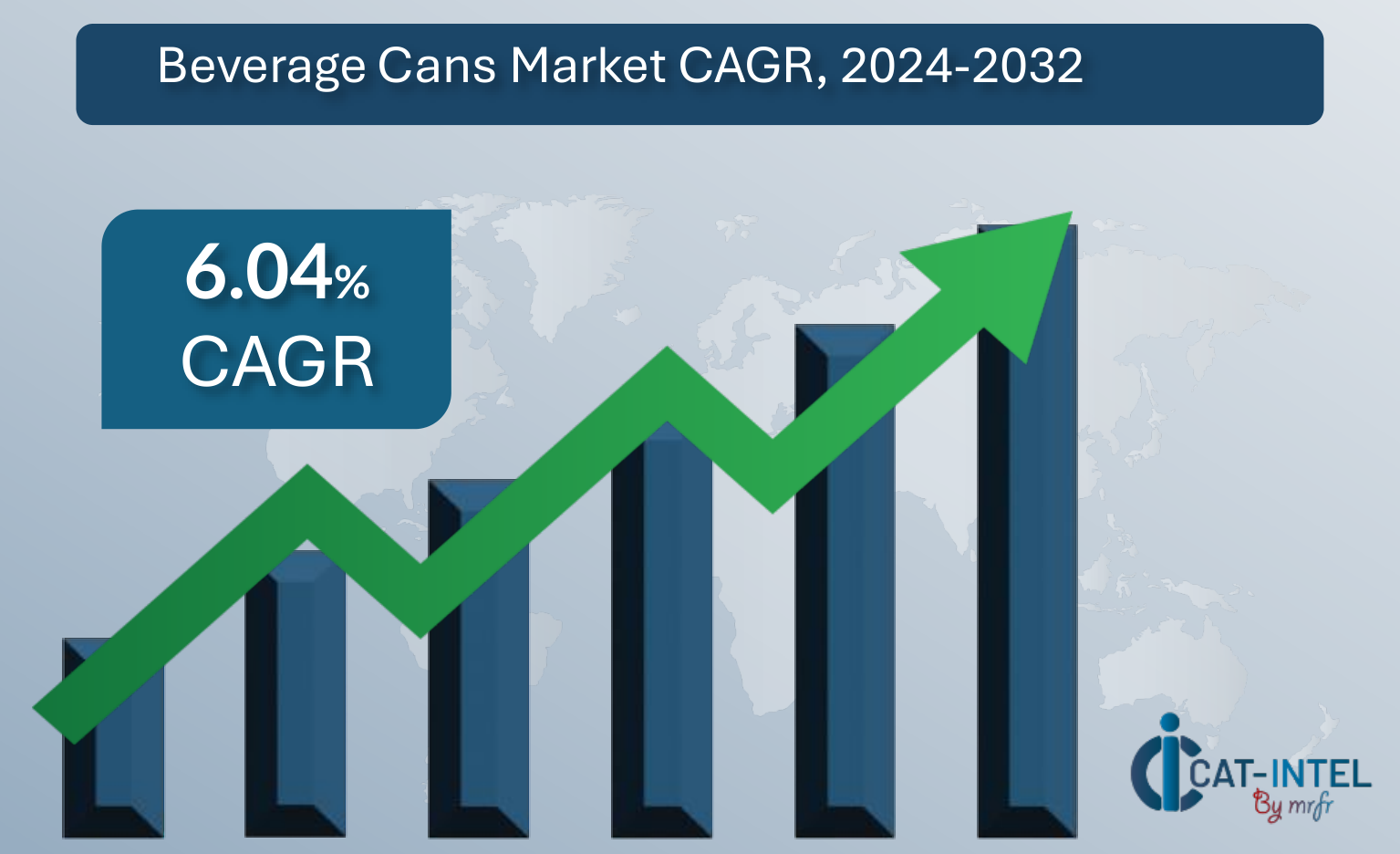
- Sector Contributions: Growth is primarily driven by:
- Sustainability Initiatives: Increasing demand for recyclable and eco-friendly packaging solutions in the beverage industry.
- Consumer Preferences: Rising consumer preference for portable and lightweight cans for convenience and durability.
- Technological Innovations: Advancements in can design, printing technology, and material innovation, such as lightweight BPA-free coatings, are driving efficiency and enhancing product appeal.
- Industry Investments: Growing investments in sustainable manufacturing processes and advanced production technologies are supporting market expansion and addressing environmental concerns.
- Regional Insights: While North America and Europe dominate the market, the Asia-Pacific region is expected to witness the fastest growth due to rising beverage consumption, expanding manufacturing facilities, and increasing focus on sustainability.
Key Trends and Sustainability Outlook:
- Sustainable Practices: Increasing focus on eco-friendly manufacturing and recyclable materials to reduce carbon footprints.
- Technological Innovation: Advancements in printing and material coatings enhance functionality and branding opportunities.
- Digital Integration: Automation in procurement and production processes improves efficiency and reduces costs.
- Customization Demand: Growing consumer preference for personalized packaging.
- Data-Driven Approaches: Use of analytics for better inventory management and streamlined supply chains.
Growth Drivers:
- Eco-Friendly Packaging Demand: Rising environmental concerns drive the shift to recyclable beverage cans.
- Consumer Preferences: Increased demand for portable, lightweight packaging solutions.
- Innovative Materials: Adoption of BPA-free and lightweight cans boosts market expansion.
- Regulatory Compliance: Stricter regulations promote the adoption of sustainable packaging solutions.
Overview of Market Intelligence Services for Beverage Cans:
The beverage cans market is grappling with rising operational costs driven by escalating raw material prices, including aluminium and coating materials, as well as higher energy and transportation expenses. Fluctuations in supply chain dynamics and geopolitical tensions further contribute to cost pressures, necessitating more resilient procurement strategies.
Market intelligence plays a crucial role by offering detailed insights into cost-saving opportunities, supplier performance, and emerging trends in material sourcing. By leveraging procurement analytics, stakeholders can identify alternative materials, optimize vendor relationships, and streamline manufacturing processes to mitigate cost variations while maintaining product quality.
Procurement Intelligence for Beverage Cans: Category Management and Strategic Sourcing
To stay competitive, companies are optimizing procurement strategies through spend analysis and vendor tracking tools. Effective category management and strategic sourcing are crucial for achieving cost-efficient procurement and ensuring the timely supply of raw materials needed for producing high-quality beverage cans.
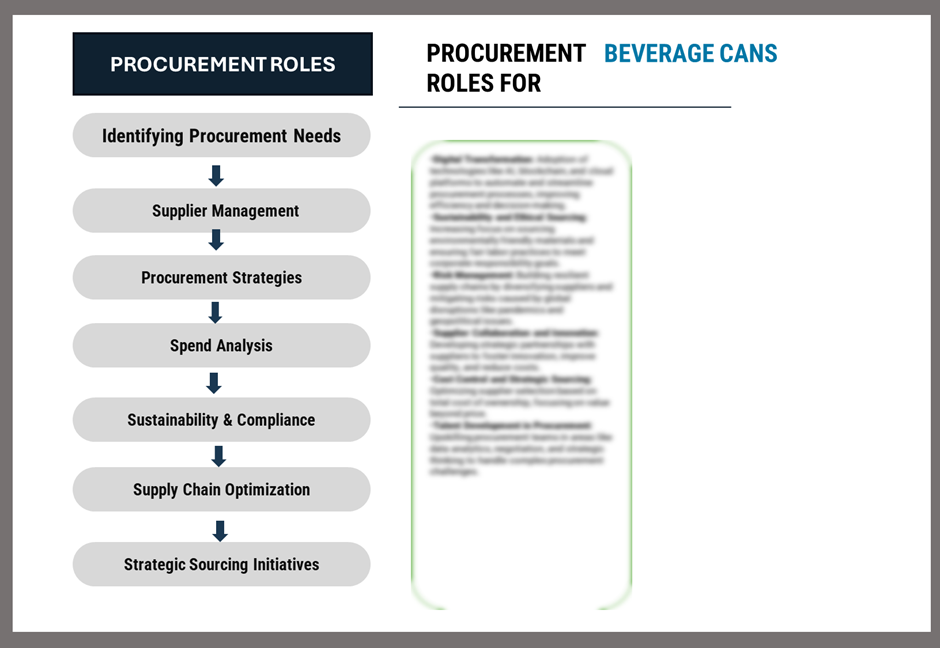
Pricing Outlook for Beverage Cans: Spend Analysis
The pricing outlook for beverage cans is anticipated to remain stable, although moderate price increases are expected due to several factors. Rising costs of raw materials like aluminium, energy expenses, and advanced manufacturing technologies are key contributors to potential price hikes. The growing demand for sustainable and recyclable packaging further drives these costs, as companies invest in eco-friendly materials and processes.
Graph shows general upward trend pricing for beverage cans and growing demand. However, there may be fluctuations influenced by economic conditions, technological advancements, and competitive dynamic.

Efforts to improve operational efficiency, adopt lightweight designs, and implement automation in production can help manufacturers manage pricing competitiveness. Collaborating with innovative suppliers, leveraging bulk procurement strategies, and optimizing supply chains are effective measures to contain costs while maintaining product quality.
Despite increasing production expenses, the focus on sustainability, innovation, and regulatory compliance will remain pivotal in managing pricing strategies. As demand for recyclable and consumer-friendly beverage cans continues to grow, balancing cost efficiency with quality and sustainability will be critical for industry stakeholders.
Cost Breakdown for Beverage Cans Total Cost of Ownership (TCO) and Cost-Saving Opportunities:

- Raw Materials (40%)
- Description: Key materials include aluminium, coatings, and other components required for manufacturing beverage cans. These materials must meet quality and safety standards to ensure durability, recyclability, and compliance with environmental regulations.
- Trends: Rising demand for lightweight, eco-friendly materials is influencing the market. Increased focus on recycled aluminium and advancements in material technology are driving efficiency and reducing environmental impact.
- Labor (XX%)
- Energy Utilities (XX%)
- Infrastructure & Overheads (XX%)
Cost-Saving Opportunities: Negotiation Lever and Purchasing Negotiation Strategies
The beverage cans industry can achieve significant cost efficiencies by refining procurement practices and leveraging strategic partnerships. Collaborating with suppliers of raw materials, machinery, and logistics services enables manufacturers to negotiate volume discounts, optimize resource sharing, and secure favourable terms.
Investing in advanced manufacturing technologies, such as automated production lines and energy-efficient equipment, streamlines operations, reduces waste, and enhances productivity, lowering overall costs. Sustainable practices, like utilizing recycled aluminium, optimizing material usage, and adopting energy-saving processes, not only cut expenses but also align with consumer preferences for eco-friendly packaging, boosting brand reputation.
Supply and Demand Overview for Beverage Cans: Demand-Supply Dynamics and Buyer Intelligence for Effective Supplier Relationship Management (SRM)
The beverage cans market is growing steadily due to increasing demand for sustainable packaging, innovation in design, and expanding beverage consumption.
Demand Factors:
- Rising Preference for Eco-Friendly Packaging: Growing environmental awareness drives demand for recyclable aluminium cans.
- Expanding Beverage Industry: Increased consumption of carbonated drinks, energy drinks, and alcoholic beverages boosts the need for durable and lightweight packaging.
- Customization and Branding: Demand for personalized and visually appealing cans is growing among beverage manufacturers to attract consumers.
- Global Focus on Sustainability: Regulatory pressures and consumer demand for sustainable products push companies toward eco-conscious packaging solutions.
Supply Factors:
- Technological Advancements in Production: Innovations in lightweight can designs and energy-efficient processes enhance supply capabilities while reducing costs.
- Recycled Aluminium Supply: Growing focus on using recycled materials ensures a steady supply and reduces raw material dependency.
- Infrastructure and Manufacturing Capacity: Investments in advanced production facilities improve scalability and ensure timely supply to meet growing demand.
- Competitive Market Pressures: An increase in manufacturers encourages better pricing, innovation, and supply chain improvements but adds pressure on resources and margins.
Regional Demand-Supply Outlook: Beverage Cans:
The Image shows growing demand for beverage cans in both North America and Europe, with potential price increases and increased Competition.
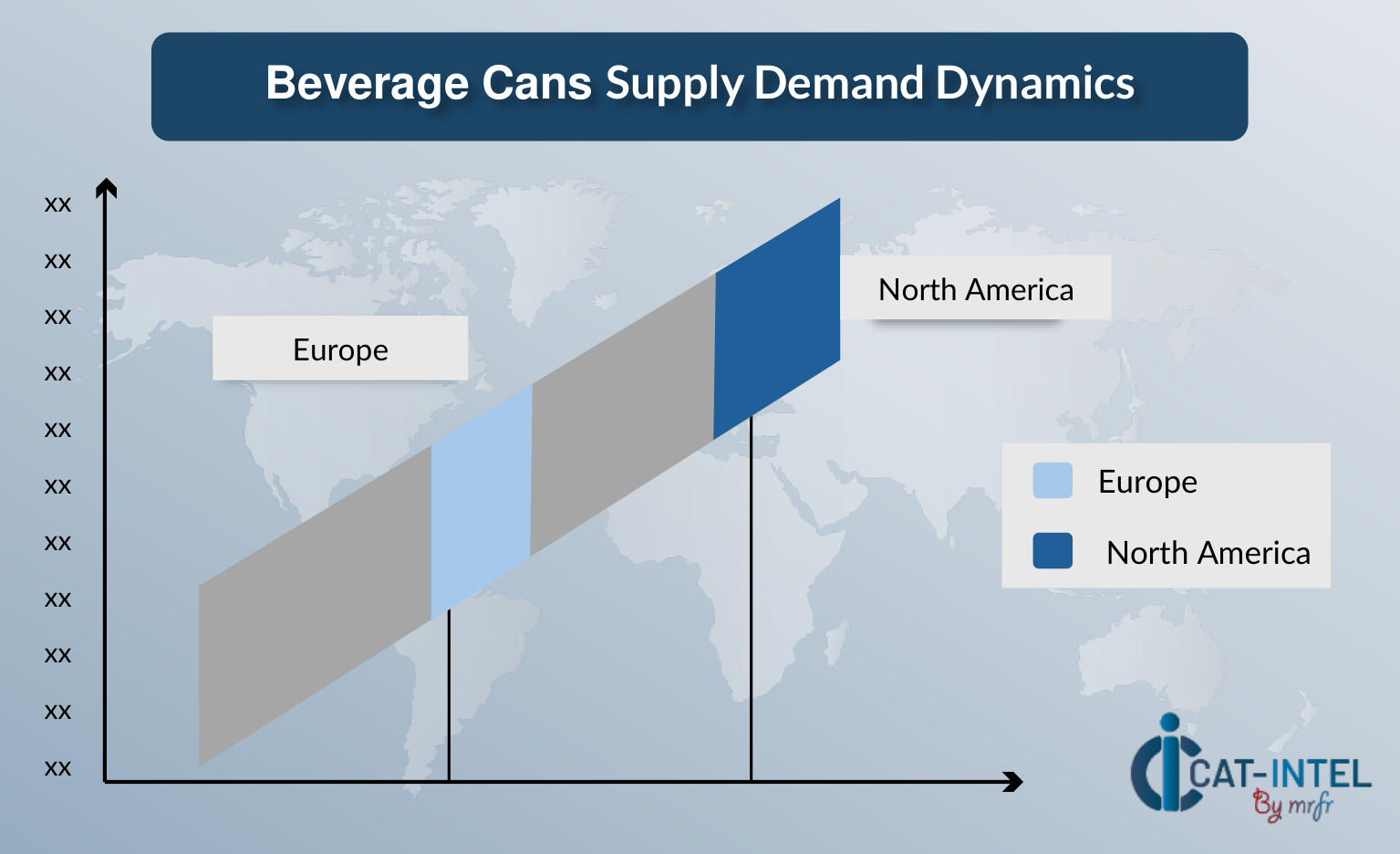
North America's Dominance in Beverage Can Market
North America: It is particularly the U.S. and Canada, holds a leading position in the beverage can market, driven by several key factors:
- Increased Demand for Sustainable Packaging: With growing concerns about environmental impact, North American companies are focusing on sustainable, recyclable beverage cans to meet consumer preferences for eco-friendly packaging.
- State-of-the-Art Manufacturing Capabilities: The region boasts advanced manufacturing infrastructure, including cutting-edge production facilities and efficient supply chains, enhancing the quality and production speed of beverage cans.
- Strict Regulatory Compliance: North America maintains stringent regulations governing the production and safety standards for beverage cans, ensuring product safety and quality control.
- Innovation in Design and Materials: The market is evolving with new designs, lighter materials, and innovative features like easy-open tabs, which improve convenience and consumer experience, boosting demand across various beverage categories.
North America Remains a key hub beverage cans price drivers Innovation and Growth.
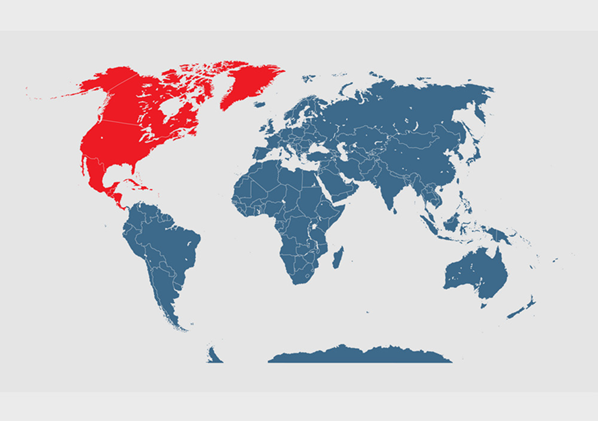
Supplier Landscape: Supplier Negotiations and Strategies
The supplier landscape in the beverage can market is diverse, with numerous global and regional players providing packaging solutions. These suppliers play a critical role in shaping market trends, influencing pricing, innovation, and availability. The market is competitive, with large manufacturers and specialized companies focusing on sustainable and high-quality beverage can production.
Currently, the market sees consolidation among leading manufacturers, but smaller and emerging suppliers are gaining traction by focusing on innovative designs, materials, and eco-friendly solutions.
Key suppliers in the beverage can market include:
- Ball Corporation
- Crown Holdings
- Ardagh Group
- Can Pack Group
- Silgan Holdings
- Toyo Seikan
- Nampak
- Huber Packaging
- Mitsubishi Aluminium
- Kian Joo Can Factory
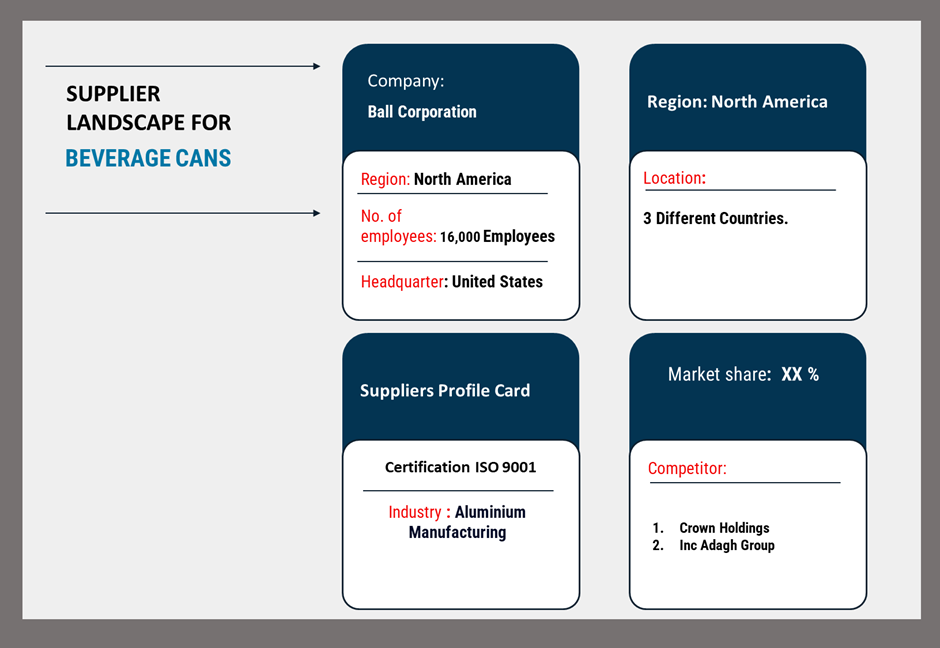
Key Developments Procurement Category Significant Development:

|
Beverage Cans Attribute/Metric |
Details |
|
Market Sizing |
Global Beverage Cans market is expected to reach USD 65 billion by 2032, growing at a CAGR of approximately 6.04% from 2024 to 2032. |
|
Beverage Cans Technology Adoption Rate |
Over 60% of manufacturers are adopting advanced production technologies to improve efficiency and sustainability. |
|
Top Beverage Cans Strategies for 2024 |
Focus on sustainable packaging, lightweight designs, cost optimization, and regional expansion. |
|
Beverage Cans Process Automation |
Approximately 45% of companies have automated manufacturing processes to enhance productivity and reduce waste. |
|
Beverage Cans Process Challenges |
Key challenges include fluctuating raw material prices, environmental regulations, and supply chain disruptions. |
|
Key Suppliers |
Leading providers include Ball Corporation, Crown Holdings, and Ardagh Group, known for innovative packaging solutions. |
|
Key Regions Covered |
North America, Europe, Asia-Pacific, with key markets in the U.S., China, India, and Brazil driven by high consumption rates. |
|
Market Drivers and Trends |
Growth driven by increasing demand for sustainable packaging, innovations in design, and rising beverage consumption. |
Frequently Asked Questions (FAQ):
Our procurement intelligence services provide insights into the supplier landscape, spend analysis, and supplier performance evaluations to help source high-quality, cost-effective beverage cans.
We assess TCO by analysing material costs, production expenses, transportation, and recycling processes, ensuring a clear understanding of long-term financial implications.
We provide frameworks to address risks such as raw material price volatility, regulatory changes, and supply chain disruptions, enabling proactive risk mitigation.
Our Supplier Relationship Management (SRM) services focus on fostering collaboration, negotiating favourable contracts, and ensuring consistent quality.
Best practices include evaluating sourcing models, categorizing suppliers, adopting competitive pricing strategies, and managing contracts effectively.
Digital tools streamline procurement processes, track supplier performance, analyse market trends, and optimize procurement strategies in real time.
Monitoring supplier quality, delivery timelines, and compliance ensures reliable sourcing and helps improve procurement decisions.
Our services provide market insights to support negotiations, securing better pricing, volume discounts, and flexible payment terms.
We offer tools that analyse global market trends, supplier market share, and price forecasts to aid in informed decision-making.
We guide compliance with safety and environmental standards, ensuring suppliers meet regulatory requirements.
Strategies include diversifying supplier bases, contingency planning, and maintaining buffer inventory to ensure uninterrupted supply.
Performance tracking tools monitor quality, delivery, and compliance metrics, helping in future procurement decisions.
Identifying suppliers with sustainable production practices and recyclable materials ensures adherence to environmental standards.
Pricing analysis services compare costs across suppliers, identifying trends and negotiation strategies to secure the best value.








